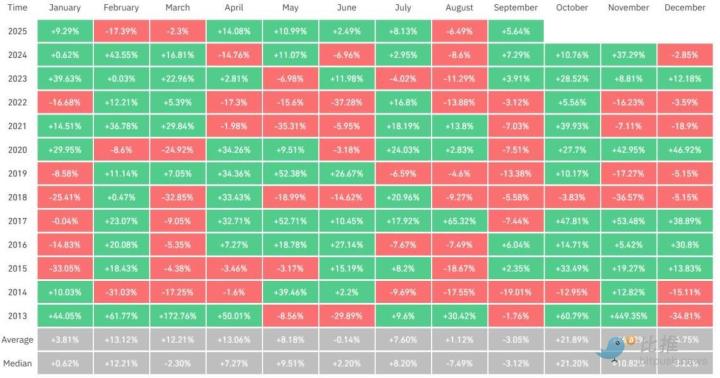Chainfeeds Introduction:
Bitcoin underperformed, alt season reappeared, and the macro environment may continue to evolve.
Article Source:
Article author:
Grayscale
Viewpoint:
Grayscale: The overall crypto market continued its upward trend in the third quarter of 2025, with all six Crypto Sectors sectors experiencing positive price returns, but fundamental data showed divergence. Bitcoin lagged behind other market sectors during this period, creating a pattern similar to an alt-season, though different from previous cycles. According to the Crypto Sectors framework developed jointly by Grayscale and FTSE/Russell, the market can be divided into six sectors, covering 261 tokens with a total market capitalization of $3.5 trillion. Blockchains are not traditional companies, but their economic activity and health can be measured by user numbers, transaction volume, and transaction fees. Third-quarter data shows a quarter-over-quarter decline in users, transactions, and fees in the Currency and Smart Contract Platform sectors, partially due to a decrease in on-chain trading and transaction activity as meme coin speculation waned since Q1. However, application-layer fee revenue increased by 28%, driven by leading applications such as Solana's Jupiter, lending protocol Aave, and derivatives exchange Hyperliquid. On an annualized basis, application-layer fee revenue has exceeded $10 billion. This means that blockchain is not only a transfer network but also an application platform, and higher application fees can be seen as a signal of increasing adoption. At the price level, all six major sectors achieved positive returns in Q3, with the financial sector leading the gains, benefiting from a rebound in trading volume on centralized exchanges (CEXs); the smart contract platform sector performed second, driven by the accelerated legislation and adoption of stablecoins. In contrast, the currency sector, where Bitcoin resides, saw relatively limited gains, while the AI sector continued its weak trend, similar to that of the US AI sector. The top 20 risk-adjusted performing tokens include large-cap projects such as ETH, BNB, SOL, LINK, and AVAX, as well as a few small and medium-sized projects with market capitalizations below $500 million. The financial sector and smart contract platform sectors occupy the most seats on this list. In summary, Q3 saw three key market themes. First, digital asset treasuries (DATs) emerged as a bright spot, with listed companies incorporating crypto assets into their balance sheets, benefiting tokens such as ETH, SOL, BNB, ENA, and CRO. Second, following the implementation of stablecoin legislation, circulating supply increased by 16% quarter-over-quarter to over $290 billion. Smart contract platforms hosting stablecoins, such as Ethereum, TRX, and AVAX, benefited significantly, with stablecoin issuer Ethena also performing exceptionally well. Third, trading volume rebounded, with centralized exchanges reaching a new high for the year in August, driving the performance of exchange-affiliated tokens such as BNB, CRO, OKB, and KCS. Furthermore, decentralized perpetual swaps continued to gain momentum, with Hyperliquid becoming a top-three protocol by fees, and DRIFT and the newcomer ASTER entering the top 20. Looking ahead to Q4 2025, market performance is likely to be driven by three emerging themes. First, the US Senate has begun deliberating on the Crypto Market Structure Act, following the bipartisan passage of related legislation by the House of Representatives in July. This signals the crypto industry's arrival at its first comprehensive financial services regulatory framework, fostering deeper integration with the traditional financial system. Second, the US Securities and Exchange Commission (SEC) has approved common listing standards for commodity exchange-traded products (ETPs), potentially expanding the range of crypto assets available to US investors through ETPs. Third, the macroeconomic environment remains a key variable. The Federal Reserve just announced a 25 basis point interest rate cut and hinted at two further rate cuts this year. In theory, rate cuts will reduce the opportunity cost of holding non-interest-bearing assets and boost risk appetite, positive for crypto assets. However, potential risks remain: a weak US labor market, high US stock valuations, and geopolitical uncertainty could all act as headwinds that could dampen market performance. Overall, Q4 will unfold under the intertwining influence of policy dividends, expanded financial product offerings, and macroeconomic volatility. The market's leading themes may differ significantly from those in Q3, and investors should closely monitor policy developments and the liquidity environment.
Content Source







